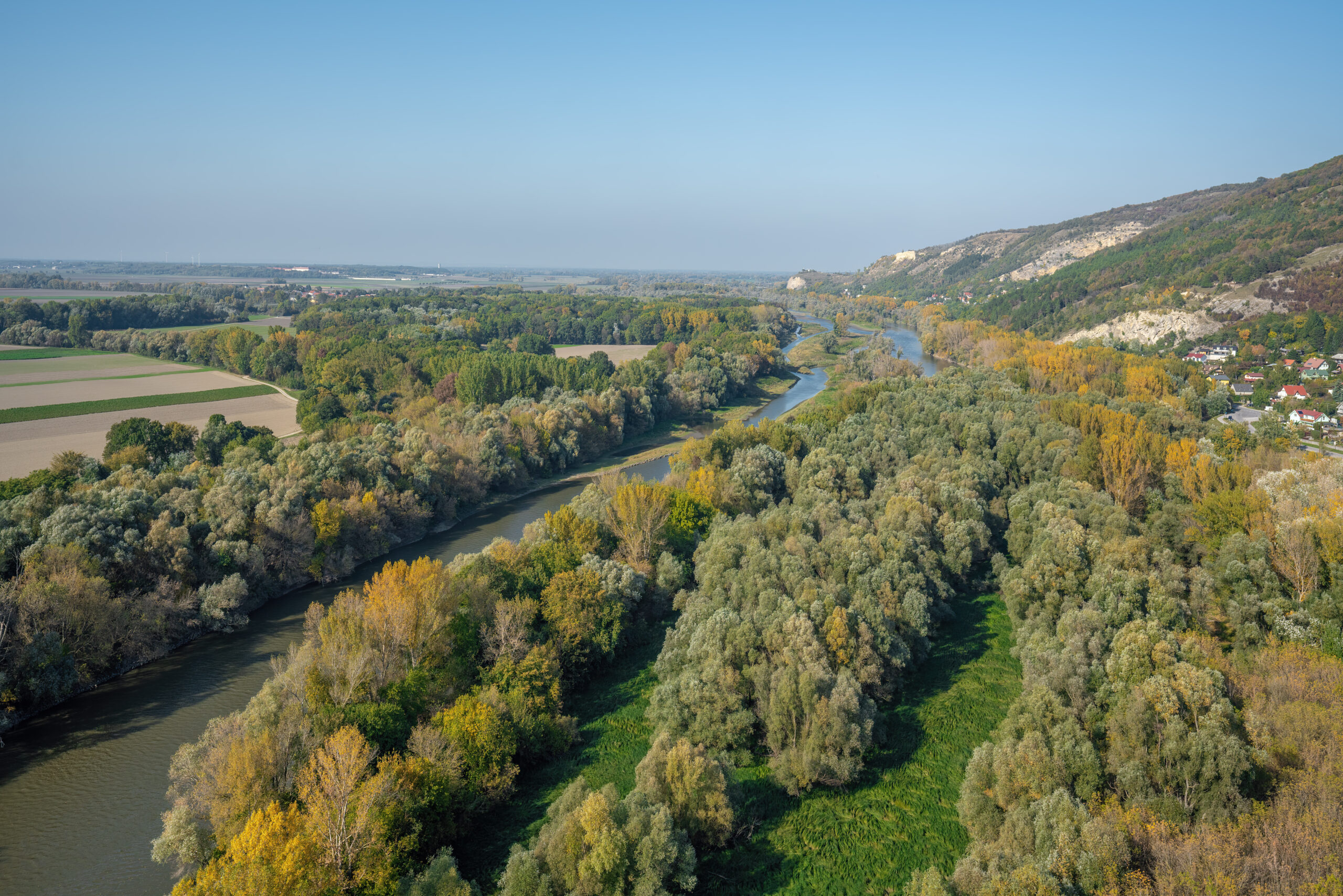The Morava River is like an artery to the whole Moravia region, from north to south. The first efforts to regulate the river go back to the 1730s when the first river lock was built. Then, 200 years later, the idea of regulating and utilizing the river resurfaced. But this time on a larger scale. In 1927, Tomáš Bat’a, a prominent Zlín industrialist and politician, decided to carry out a project to redraw the landscape and the river itself.
During that time, Tomáš Baťa was already a renowned entrepreneur and a visionary with an insatiable desire to improve Czechoslovakia and especially his city-turned-factory, Zlín. His need for raw materials, especially coal for Zlín power plants, and high-capacity transportation grew as fast as his factory. Baťa needed to secure a large-scale corridor for moving the resources and finished goods. That is how the idea to industrialize the Morava River was conceived.
Therefore, the plan was to regulate the Morava River, widen and deepen its bed in some sections, and build artificial canals where this is impossible. The final goal was the Danube River, which would connect Bata’s factories to the world by water.
Unfortunately, Tomáš Baťa would never see his project become a reality. He died in a plane crash in 1932. However, the tragic death of Tomáš Baťa did not stop the project. When his son Jan Antonín Baťa took over the company’s management, he gave the project the green light.
An Engineering Marvel with a huge Economic impact
Construction of the monumental waterwork began in 1934. The construction budget was estimated at CZK 25.4 million. Over time, the budget increased to a whopping CZK 35 million. All work was completed in the autumn of 1938, only four years later. If we transfer the entire project’s cost into today’s money, the project would amount to CZK 25.1 billion. That’s €1.1 billion.
The construction of the Baťa Canal was an intricate and colossal undertaking. Stretching over 52 kilometers and encompassing 12 locks, the canal was engineered to accommodate cargo vessels and passenger boats. The locks facilitated navigation through elevation changes, allowing ships to traverse varying terrain levels easily. The construction utilized innovative techniques for the time, showcasing the cutting-edge engineering prowess of the era.
The completion of the Baťa Canal revolutionized the transportation landscape of the region. It provided a cost-effective means to transport raw materials such as coal, wood, and clay, essential for Baťa’s diverse industries, including footwear and machinery manufacturing. The canal significantly reduced transportation costs and propelled industrial growth in the area.
Canal’s demise and dark outlook
Unfortunately, due to the Second World War, the post-war economic crisis, and the reluctance of the communist regime, Baťa’s dream of building a canal all the way to the Danube was not achieved. The communists who came to power in 1948 had little interest in investing considerable sums in repairing and expanding the project of Tomas Baťa and his son.
Although the canal continued to be used for the primary transport of raw materials in the region, no expansion or reconstruction took place. Operations on the canal then ceased altogether in the late 1960s. The canal has since fallen into disrepair.
It seemed that this was the end of the Moravian technological wonder. The canal that became a lifeline for the local populace, fostering social interactions and community cohesion, was left to its fate. Its once tranquil waters and canal banks transformed into spaces for leisure and went quiet.
Velvet Revolution, Canal revival, and preservation efforts
When the communist regime fell in 1989 during the so-called Velvet Revolution, supporters and admirers of the Baťa Canal looked forward to a brighter future. Plans were immediately drawn up for its restoration – a badly needed restoration. But it was clear from the beginning that the repair would be lengthy and costly. Important questions arose, such as: Who will pay for it all? Who will use the canal when it is repaired?
Slow repairs financed by the government soon began. In 1995, the Agency for the Development of Tourism on the Baťa Canal was established, which still brings together municipalities that financially contribute to this technical monument. In 2002, the public benefit corporation Baťa Canal was created and, to this day, fundraises and participates in the canal’s operations.
The canal has also become a significant tourist attraction in the area, with visitors exploring its waters and learning about its history through museums and guided tours. Today, the Baťa Canal has been reconstructed in its entire length, and visitors from the Czech Republic and abroad can take the whole route on one of the many boats traversing the canal.
The legacy that lives on
The Baťa Canal in the Czech Republic is more than just a waterway; it is a conduit that connects history, innovation, and culture. It symbolizes resilience and determination and is a testament to the human spirit’s ability to overcome challenges and create lasting change. Despite the passage of time and shifts in industrial and technological landscapes, the canal’s relevance endures, reminding us of the transformative power of visionary ideas.
Its creation by Tomáš Baťa and his son Jan Antonín Baťa and its subsequent impact on the region’s economic growth and cultural identity underlines its significance. As preservation efforts continue to ensure its existence for future generations, the Baťa Canal remains an awe-inspiring reminder of the potential within the convergence of human ambition and engineering brilliance.







